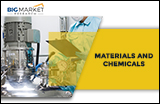
Global 1 4 Butanediol Market
- MAR2978743
- 177 Pages
- January 2018
- Materials and Chemicals
End-user/Technology
The end users are mostly end use industry sectors like Construction & Mining, Power Generation and Cement Manufacturing. Chemical plants involved in the manufacturing of Gamma Butyrolactone (GBL), Polyurethanes, Tetrahydrofuran, Poly Butylene Terephthalate (PBT), etc. also make large use of 1,4 Butanediol.
Market Dynamics
The major growth driving factor for global 1,4 Butanediol market is the growth of end use industries. The rapid industrial growth in countries of Asia Pacific region is expected to drive the demand for 1,4 Butanediol. China has the largest production capacity for this chemical and has thus emerged as a major producer of 1,4 Butanediol. These factors mainly drive the demand for the chemical.
Market Segmentation
Global 1,4 butanediol market is segmented as follows based on type of applications:
--> Polyurethane
--> GBL- Gamma-butyrolactone
--> PBT-Polybutylene Terephthalate
--> THF- Tetrahydrofuran
Regional/Geographic Analysis
Regions like Latin America, North America, Eastern and Western Europe, Middle East & Africa, Asia Pacific and Japan enjoy a significant market share of 1,4 butanediol. Asia Pacific emerged as the largest consumer of 1,4 butanediol, with a volume share of 63% in 2015. It is expected to achieve a CAGR of 8.5% from 2016 to 2025 while North America and Europe are expected to have a slower growth in demand for the chemical, mainly due to saturation of end use industry.
Opportunities
The global market size for 1 4 Butanediol was valued at 6.19billion USD in 2015. This market is expected to grow at a CAGR of 7.7% from 2016 to 2025. The increased application of its various derivatives like GBL, PBT, THF in different industrial processes and production of spandex fiber has spurred the growth of the chemical market. Besides, the health and fitness industry offers great opportunity for expansion of the market globally due to widespread use of spandex fiber in making comfortable and flexible sportswear.
Key Players
Some of the major players of global 1,4 butanediol market are Mitsubishi Chemical Corporation,
BASF SE, Sipchem, LyondellBasell Industries N.V, Bioamber Inc. and Ashland Inc.
Report Contents:
> Market segments
> Market Drivers, Restraints and Opportunities
> Market Size & Forecast 2016 to 2022
> Supply & Demand Value Chain
> Market - Current Trends
> Competition & Major Companies
> Technology and R&D Status
> Porters Five Force Analysis
> Strategic and Critical Success Factor Analysis of Key Players
Regional Analysis:
> North America
>> US and Canada
> Latin America
>> Mexico, Brazil, Argentina and Rest of Latin America
> Western Europe
>> EU5 (Germany, France, Italy, Spain, U.K.)
>> Nordic Countries (Denmark, Finland, Norway, and Sweden)
>> Benelux (Belgium, The Netherlands, and Luxembourg)
>> Rest of Western Europe
> Eastern Europe
>> Russia
>> Poland
>> Rest of Eastern Europe
> Asia Pacific
>> China
>> India
>> Japan
>> Australia and New Zealand
>> Rest of Asia Pacific
> Middle East and Africa
>> GCC countries (Saudi Arabia, Oman, Qatar, Bahrain, UAE and Kuwait)
>> South Africa
>> North Africa
>> Rest of Middle East and Africa
This report is an elaborate aggregation of primary inputs from industry experts and participants across the supply chain. It provides details on market segmentation which is derived from several product mapping exercises, macroeconomic parameters and other qualitative and quantitative insights. The impact of all such factors is delivered across multiple market segments and geographies.
Report Highlights:
> Detailed Historical Overview (Market Origins, Product Launch Timeline, etc.)
> Consumer and Pricing Analysis
> Market dynamics of the industry
> Market Segmentation
> Estimated Market Sizing in terms of volume and value
> Recent trends in Market and impact
> Research Status and Technology Overview
> Extensive Industry Structure Coverage
Similar Reports
Photonic Crystals are attractive optical materials for controlling and manipulating the flow of light. The global market for components and modules using Photonic Crystals indicates a CAGR of 33.1% and is estimated to reach $20.4 billion in 2017.
Nanomaterials possess nanoscale dimensions ranging from 1 to 100 nanometers. They occur naturally or can be engineered with specific properties such as size, shape, surface, and chemistry. Volcanic ash and forest fibers are some of the examples of natural nano...
- Publish Date: September 10, 2016
- $5820
Global molded plastics market was valued at $529,845 million in 2016, and is expected to garner $690,158 million by 2023, registering a CAGR of 3.9% from 2017 to 2023. Molded plastics are synthetically produced non-metallic compounds, which can be molded ...
- Publish Date: July 4, 2017
- $5370